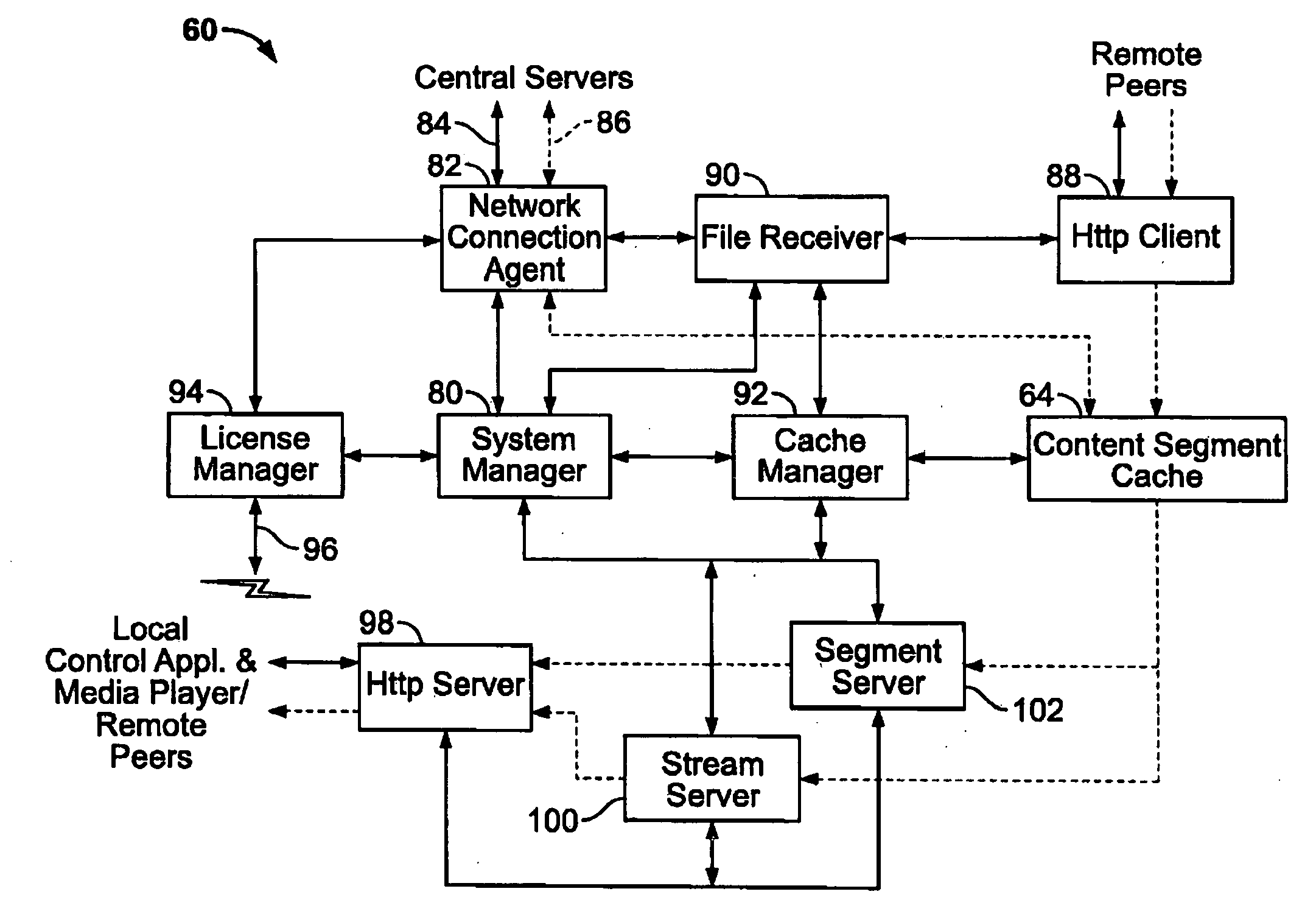Mediated multi-source peer content delivery network architecture
a content delivery network and peer content technology, applied in the field of network-based content delivery systems, can solve the problems of reducing the quality of service of the content source site, and reducing the cost effectiveness and reliability of conventional content streaming systems. , to achieve the effect of reducing the complexity and cost of the central content mediation system, increasing the perceived quality of service and reliably maintaining the quality of servi
- Summary
- Abstract
- Description
- Claims
- Application Information
AI Technical Summary
Benefits of technology
Problems solved by technology
Method used
Image
Examples
Embodiment Construction
[0029]The content distribution network (CDN) of the present invention provides a comprehensive system solution to delivering streaming media and other digital content files to end-user systems with a consistent, high quality of service. The end-user systems participate in a distributed network of peer computer systems, organized into a tiered set of content sources, that store and, on request, selectively forward content to any other peer computer system within the network. The distribution of content and the coordination of content requests is mediated through a centralized server system, which maintains a directory catalog of the available content and of the location of the content within the network.
[0030]In the preferred embodiments of the present invention, each unit typically represented by a content file, is segmented into discrete parts that are each uniquely identified in the catalog maintained by the mediation server system. Multiple copies of each segment are preferably d...
PUM
| Property | Measurement | Unit |
|---|---|---|
| buffer length | aaaaa | aaaaa |
| size | aaaaa | aaaaa |
| data structure | aaaaa | aaaaa |
Abstract
Description
Claims
Application Information
 Login to View More
Login to View More - R&D
- Intellectual Property
- Life Sciences
- Materials
- Tech Scout
- Unparalleled Data Quality
- Higher Quality Content
- 60% Fewer Hallucinations
Browse by: Latest US Patents, China's latest patents, Technical Efficacy Thesaurus, Application Domain, Technology Topic, Popular Technical Reports.
© 2025 PatSnap. All rights reserved.Legal|Privacy policy|Modern Slavery Act Transparency Statement|Sitemap|About US| Contact US: help@patsnap.com



